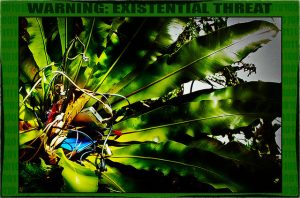Exact Endoscopy Parts
Exact Endoscopy Parts
Endoscopes are a crucial component of modern medicine, and their complex design requires regular replacement parts to ensure optimal performance. These high-tech devices rely on multiple sophisticated components to function properly, including insertion tubes and instrument channels.
Manufacturers of these essential components ensure strict standards of quality and compatibility with different brands of endoscopes. One such company is Smart Tech Med, which offers a wide range of endoscope components.
Angulation Knob
A specialized endoscope knob is an essential component that allows you to maneuver the endoscope’s tip in a wide variety of directions. It is a small piece of equipment that connects to wires running the length of the insertion tube. Pulling on these wires at the three and twelve-o’clock positions causes the endoscope’s tip to move up and down. The angulation knob is essential in a wide range of procedures, including colonoscopy, biopsy, and other internal diagnostic procedures.
If you are using a flexible endoscope, the light guide lens should be carefully inspected. This is a sensitive part of the scope, and it can be damaged easily by bumping or banging it during transport to a centralized reprocessing station. If the lens is damaged, it may need to be replaced.
Inspecting the insertion tube is also important. Look for kinks and excessive bending. Avoid extended periods of coiling the insertion tube, and be sure to use sinks or soak tubs that are large enough to accommodate the insertion tube. Also, avoid stacking endoscopes for long periods of time. These can damage the insertion tube solder joints. Also, inspect the metal shaft for signs of damage, such as a bent or impacted tip. Finally, check the video image for fluid invasion, Stains, Redcrack, and X-Ray yellowing. If these are present, repairs will be needed.
Suction Valve
As the name implies, the suction valve is used exact endoscopy parts inc to evacuate fluid and tissue specimens. This function ensures that the endoscope is kept clean, enabling it to perform its critical role in the diagnosis and treatment of patients. This valve is a silent hero that plays a crucial role in the success of endoscopic procedures.
Optical System
The specialized optical system is an essential component of the endoscope, as it transmits light and images from the inside of the body to a monitor for viewing. During EGD, the endoscope’s optical system provides a clear and detailed view of the esophagogastroduodenoscopy (EGD) site to allow doctors to make accurate and precise diagnoses and treatments.
Insertion Tube
The flexible and elongated endoscope insertion tube houses the endoscope’s attachments, including channels for instruments and irrigation. It must be constructed of a durable material that can withstand the rigors of endoscopic use, while providing flexibility and a high level of rigidity.
The insertion tube also contains four deflection cables and many layers of protective materials. The endoscope parts outer cover of the insertion tube protects the inner tubes against contamination, and should be designed to meet various requirements, such as heat resistance, flexibility, chemical resistance, and water tightness.
Insertion Tube
The endoscope is a medical marvel, allowing physicians to see the inner workings of the human body with unprecedented finesse. While the sweeping motions of an endoscope’s bending section are what catch most people’s attention, the intricate mechanisms that animate this tool showcase the true miracle of modern medical technology.
The insertion tube of an endoscope is a key component that allows the instrument to bend and maneuver within the patient’s body. It features a myriad of tubes, including those for suction and air, as well as one for a water jet that helps to wash the objective lens. Additionally, it contains a bundle of charge-coupled device (CCD) image sensors, which sends live three-color images to the video processor through input/output wires.
To control the insertion tube’s movements, four angulation wires are linked to it. These enable the endoscope to move up and down or right and left, granting physicians unparalleled control over the scope.
Finally, the insertion tube includes an air/water valve. When the valve is activated, water passes from a channel in the insertion tube into a nozzle at the tip of the endoscope, rinsing off the lens during procedures. The insertion tube is also made of biocompatible materials that comply with stringent medical standards, and it can be subjected to rigorous disinfection and sterilization procedures.
Instrument Channel
The Instrument Channel is an endoscope tube accessory that provides multiple critical functions. The device allows for the use of a variety of medical instruments that may be needed during a procedure, such as biopsy forceps, cytology brushes, and guide wires. In addition, the device includes air and water channels for manual cleaning and irrigating.
The insertion tubes are flexible and elongated, which makes them easier to navigate through the body’s internal pathways without damaging other endoscope parts. These tubes are used for a variety of procedures, such as endoscopic retrograde cholangiopancreatography (ERCP) and colonoscopies.
One of the most critical components in an endoscope is its optical system, which includes the image sensor and the objective lens. The image sensor transmits back light reflected from the test area to illuminate internal body cavities, providing doctors with high-resolution images for accurate diagnostics and treatment decisions.
The image sensors and fiber optics work together to capture the most accurate data and images possible during an endoscopy, ensuring that patients receive safe and effective treatment. In order to maximize the benefits of an endoscope, it is essential that it is maintained and inspected regularly. Endoscope repair requires a thorough understanding of how the device works; key repair techniques; and access to authentic OEM parts. The major endoscope manufacturers encourage hospitals to return damaged endoscopes for proper repairs by a qualified technician.
